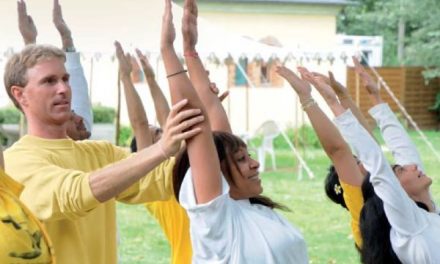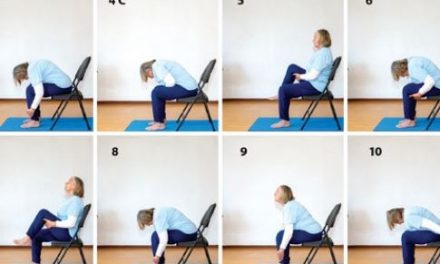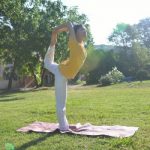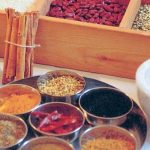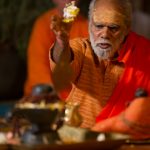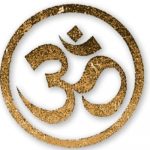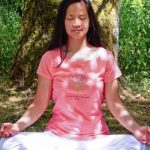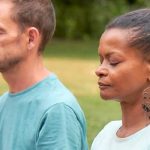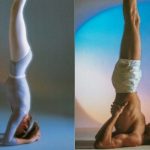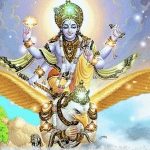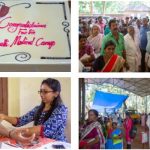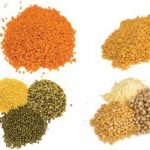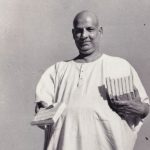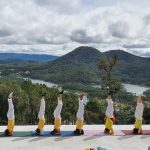 The King and Queen of Asana
The King and Queen of Asana
by P.C. Kapoor
Inverted postures are exceptional innovations of yogic practice. During inversions the pull of gravity is counteracted, which leads to enhanced deep breathing, which in turn stimulates an oxygenated blood supply to the brain.
Inversions assist the venous flow of blood towards the heart; blood and lymph accumulated in the lower extremities are drained back to the heart and then circulated to the lungs, purified and re-circulated to all parts of the body. The normal upright position of the body has an inclination to induce weariness on the organs over time; the inversions combat this effect of tiredness and is the reason why their practice is refreshing, energising and invigorating.
Inverted postures improve the quality of concentration and meditation, refining consciousness and enabling it to enter unexplored levels of the mind. Some of the benefits of inversions include an increase in self-confidence, reduction of fear, stress and anxiety and an increase in mental power. In yogic parlance, inversions are used to sublimate and transform sexual energy into spiritual energy. The aim in this context, is to stimulate the chakras, open the sushumna nadi and raise the kundalini to bring about psychic awakening.
The practices influence sluggish apana vayu i.e. they facilitate the downward and outward flow of energy from the body, empowering jatharagni (the digestive fire) at the same time. Sirsasana (headstand) and Sarvangasana (shoulderstand) are both classified as inversions. However each has a different effect on the endocrine, nervous and musculoskeletal systems of the body. In the Sivananda tradition Sirsasana and Sarvangasana are complementary postures.
Please Note: Inverted postures such as Sirsasana and Sarvangasana must be practised under the supervision of a trained teacher only.
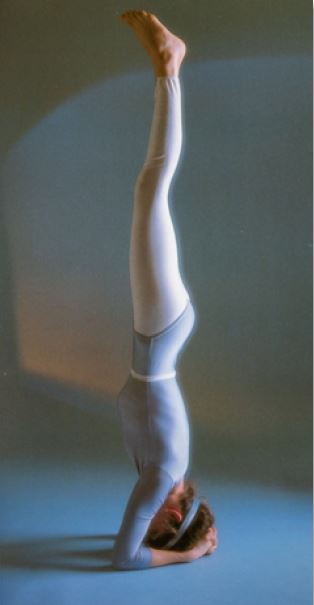 Sirsasana
Sirsasana
The name Sirsasana comes from the Sanskrit word ‘sirsa’ meaning ‘head’ and ‘asana’ meaning ‘posture’. Sirsasana is considered as the King of Asanas as it impacts the sahasrara chakra. Swami Vishnudevananda says “Sirsasana is one of most powerful asanas for body and mind, a virtual panacea for all human ills.”
Physical Benefits
The main physical effect of Sirsasana is on the brain. The practice promotes clarity and sharpness of intellect by building the awareness, coordination and restraint required to stay and balance in the posture and revitalising the pituitary, pineal and hypothalamus glands in the brain that regulate growth and health in the body.
In the inverted state the lymphatic and cardiovascular systems are affected— the lymphatic system drains more efficiently and blood from the veins in the leg moves back toward the heart with less resistance, resting the heart. In addition the pose positively affects the nervous and digestive systems of the body. Posture is improved due to adjustment of spine alignment: legs, pelvis and torso are strengthened: and its practice aids recovery in diseases of the eye, nose, head, throat, stomach, liver, spleen, and lungs.
It relieves renal colic, deafness, diabetes, piles, asthma, constipation, alleviates problems of the uterus and ovaries, promotes fertility and slows down the ageing process.
Mental Benefits
The improvement of cognitive abilities such as concentration, memory and processing can be attributed to a regular headstand practice.
Spiritual Benefits
The posture illuminates psychic faculties by impacting on the sahasrara chakra. The sahasrara is the most sacred of all chakras as it is considered to be the culmination point of Yoga. It is here where the kundalini merges with its Source and attains supreme bliss. It is the centre at which Self-realisation happens.
Contraindications of Sirsasana
Practitioners suffering from heart conditions, high blood pressure or severe back conditions should not practise Sirsasana. Those with arteriosclerosis, glaucoma, detached retina, ear or eye infection or any disease of the brain, or those with cervical spine problems should refrain from inverted postures.
 Sarvangasana
Sarvangasana
In Sanskrit, ‘sarva’ means ‘all’ or ‘entire’ and ‘anga’ means ‘organ’ or ‘body part’. Thus Sarvangasana means ‘full body pose’ because of its benefits for the whole body. It is also known as the Queen of Asanas. The inversion of the asana increases oxygenated blood supply to the chest area, assisting in the healing of ailments in this region such as bronchitis and asthma.
The chin lock of the posture, which is known as the Jalandhara bandha, stimulates the thyroid and parathyroid glands, involved in the regulation of the nervous and muscular systems and metabolism of the body. The posture also reduces premenstrual tension and other hormone-related disorders, helps to cleanse the intestines, improves digestion and eliminates toxins from the body. It soothes the nervous system and promotes patience and emotional stability.
Physical Benefits
Sarvangasana stimulates the thyroid gland, balancing the circulatory, digestive, reproductive, nervous and endocrine systems. The thymus gland is stimulated boosting the immune system. The posture invigorates the parathyroid gland, ensuring normal development and regeneration of the bones, preventing premature calcification. Abdominal breathing is induced improving the exchange of air in the body thus releasing stress. It also aids in the preservation of youthfulness by keeping the spine elastic.
Mental Benefits
The shoulderstand brings tranquillity to the mind, relieves mental and emotional stress, fear, stress-related headaches and alleviates psychological disturbance. Its practice is beneficial in relieving insomnia and depression.
Spiritual Benefits
The posture impacts on the Vishuddha chakra, the centre of pure consciousness and creativity. When the consciousness dwells in this chakra, right understanding and discrimination develop. With consistent shoulderstand practice, a new sense of vigour and strength results accompanied by a feeling of happiness, peacefulness and confidence.
Contraindications of Sarvangasana
Practitioners with high blood pressure, detached retina, glaucoma, hernia, cardiovascular disease, cervical spondylitis, and/or slipped disc should not practise the shoulderstand.
P.C. Kapoor is Director of the Sivananda Nataraja Centre in Delhi. [email protected]



